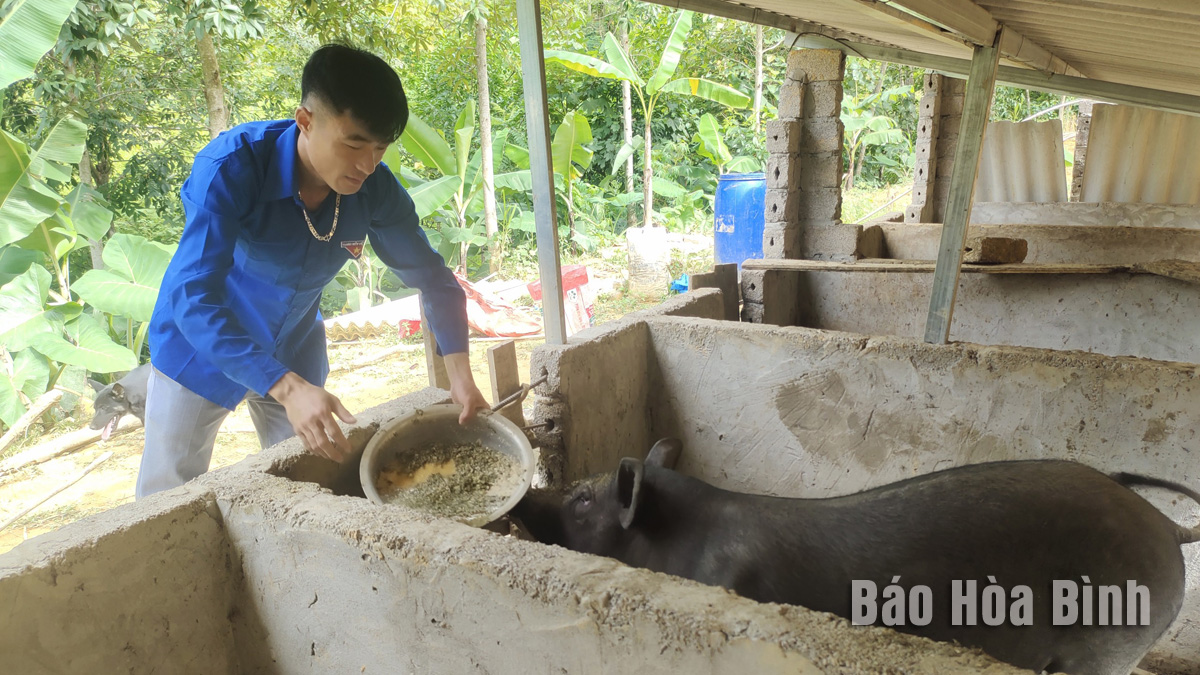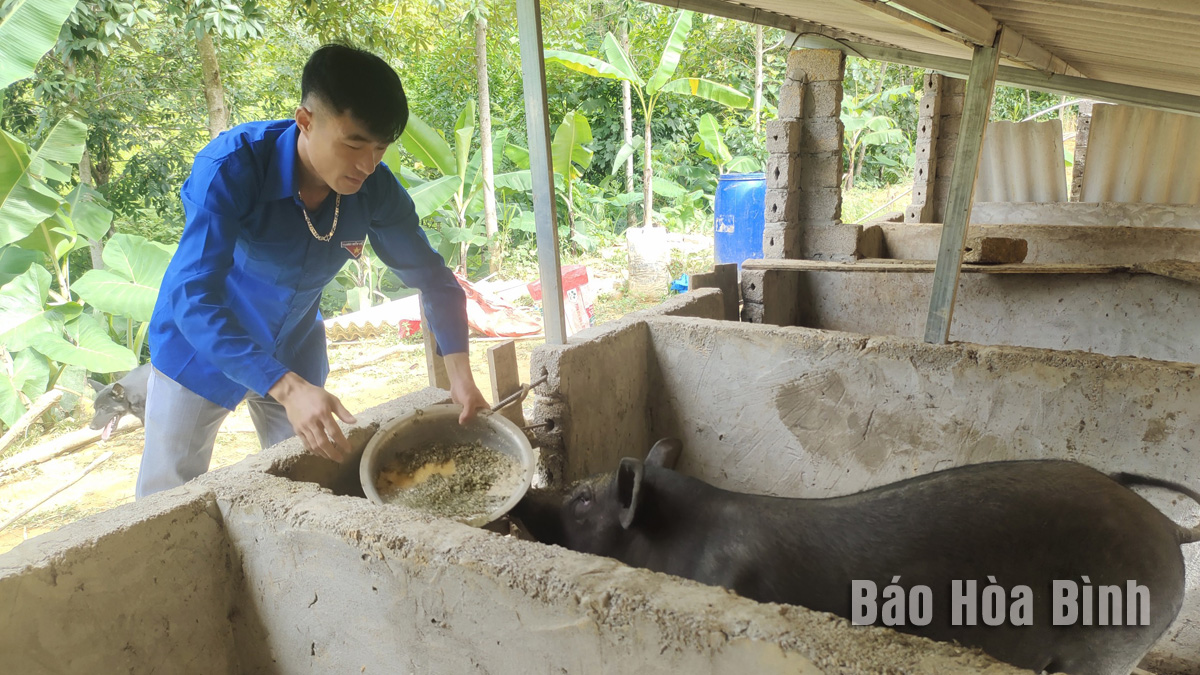
At this time, traders for local specialty pigs to serve the Lunar New Year. This year, the price of local pigs is stable. Favorable consumption has brought happiness to farmers in Hoa Binh province.
Mr. Lo Van Tuat's family in Khem hamlet, Doan Ket commune, Da Bac district sold 27 local black pigs and had money to buy Tet goods.
Mr. Lo Van Tuat's family in Khem hamlet, Doan Ket commune, Da Bac district sold 27 local black pigs and had money to buy Tet goods. Da Bac district, Hoa Binh province develops local black pig farming. With favorable conditions for grazing land, food sources, and purebred local pig breeds, local black pigs in the Da Bac district are favored by customers because of their delicious meat quality.
In Doan Ket highland commune, Da Bac district, the small-eared black pig breed is quite popular. Many households focus on developing this pig breed into their main economic sector, selling for 100 - 110 thousand VND/kg.
In Yen Thuy district, there are also many households focusing on raising specialty and indigenous pig breeds. Ms. Vu Thi Nga, Trung Hoa hamlet, Phu Lai commune, has a farm raising black and wild pigs with a quantity of several hundred pigs/year. The family's consumption of pigs is quite favorable, especially during holidays and Tet when customer demand increases.
In general, this year's Tet pig market is still quite vibrant, pig consumption is favorable, and selling prices are stable. Currently, the price of wild boar ranges from 100 - 150 thousand/kg of live pig. Not only sold to customers who come to buy at the farm but Hoa Binh local pigs are also shipped to customers from far away and in neighboring provinces.
With delicious meat quality, local specialty pigs are one of the most popular foods during Tet. Comrade Tran Tien Truong, Deputy Director of the Provincial Department of Animal Husbandry and Veterinary Medicine, said: Currently, indigenous pig breeds are commonly raised, especially in highland communes in the province, with convenient food sources. and grazing conditions. Not only during Tet, the selling price of local pigs tends to be stable, so it brings high economic efficiency.
In Hoa Binh province, several cooperatives are raising and consuming indigenous pigs, with output becoming more and more stable. This is also livestock that the province focuses on raising on a household scale, especially in highland areas with suitable conditions. In addition, at this time, the price of white pigs also increases day by day, reaching over 60 thousand VND/kg on the farm, and about 58 thousand VND/kg in households. Such selling prices are a positive signal for farmers when the Lunar New Year has arrived.
According to data from the Hoa Binh Provincial Party Committee, the industrial production index for the first six months of 2025 is estimated to have increased by 20% compared to the same period last year. This marks the highest year-on-year growth rate for this period since 2020.
In the first six months of 2025, Hoa Binh province’s export turnover was estimated at 1.145 billion USD, marking an 18.11% increase compared to the same period in 2024. Import turnover was estimated at $ 804 million, a 17.15% increase, which helped the province maintain a positive trade balance.
The lives of the ethnic minority farmers in Tan Lac district have gradually improved thanks to the new directions in agricultural production. This is a testament to the collective strength fostered through the professional associations and groups implemented by various levels of the district’s Farmers’ Union.
With the motto the "product quality comes first,” after nearly one year of establishment and operation, Muong village’s Clean Food Agricultural and Commercial Cooperative, located in Cau Hamlet, Hung Son Commune (Kim Boi district), has launched reputable, high-quality agricultural products to the market that are well-received by consumers. The products such as Muong village’s pork sausage, salt-cured chicken, and salt-cured pork hocks have gradually carved out a place in the market and they are on the path to obtaining the OCOP certification.
In the past, the phrase "bumper harvest, rock-bottom prices" was a familiar refrain for Vietnamese farmers engaged in fragmented, small-scale agriculture. But today, a new spirit is emerging across rural areas of Hoa Binh province - one of collaboration, organisation, and collective economic models that provide a stable foundation for production.
Maintaining growing area codes and packing facility codes in accordance with regulations is a mandatory requirement for agricultural products to be eligible for export. Recently, the Department of Agriculture and Environment of Hoa Binh province has intensified technical supervision of designated farming areas and packing facilities to safeguard the "green passport" that enables its products to access international markets.



